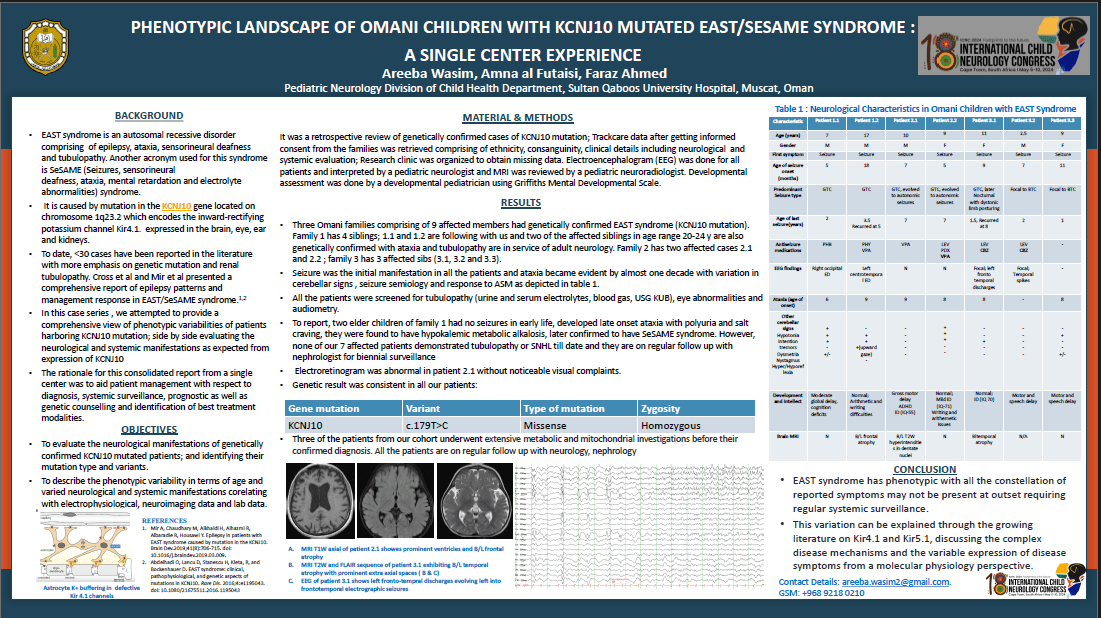Clinical And Genetic Spectrum Of Omani Children With EAST/SeSAME Syndrome Caused By KCNJ10 Mutation
EAST/SeSAME syndrome is a rare autosomal recessive disorder affecting the Central Nervous System (CNS), inner ear, and kidney. EAST syndrome comprises of epilepsy, ataxia, sensorineural deafness, and renal tubulopathy while SeSAME is abbreviated as seizures, sensorineural deafness, ataxia, intellectual disability, and electrolyte imbalance. It results from loss-of-function mutations in the KCNJ10 gene encoding the inward-rectifying potassium channel Kir4.1 In this article, our goal is to present a comprehensive description of neurological manifestations and management along with extent of systemic involvement. STUDY DESIGN: Cross-sectional review SETTING: Pediatric Neurology Division of Child Health, Sultan Qaboos University Hospital , Muscat Oman METHODOLOGY Total 6 Omani children from 3 families with confirmed KCNJ10 mutation were reviewed in which their clinical phenotype, radiological spectrum, developmental status and gene mutations were evaluated. Seizure type, anti seizure medications, unsteadiness and intellectual disability were noted and compared to status before diagnosis. RESULTS In patients with EAST syndrome, seizures were the first manifestation became noticeable in infancy, followed by motor delay. Ataxia became noticeable around 3 years of age, 4 patients had formal hearing assessment , two had hearing impairment.Most of them respond to VPA and didn’t tolerate its tapering.All 6 patients including their affected siblings are homozygous for KCNJ10 mutation. CONCLUSION The complex disease mechanisms and the variable expression of disease symptoms result from a molecular physiology perspective. Knowledge of the pathophysiology of EAST/SeSAME syndrome and their multifaceted clinical spectrum is an important prerequisite for making the correct diagnosis and customs the basis for personalized therapies.
Areeba Wasim
Sultan Qaboos University Hospital
Oman
Faraz Ahmad
Sultan Qaboos University Hospital
Oman
Amna Al Futaisi
Sultan Qaboos University Hospital
Oman
